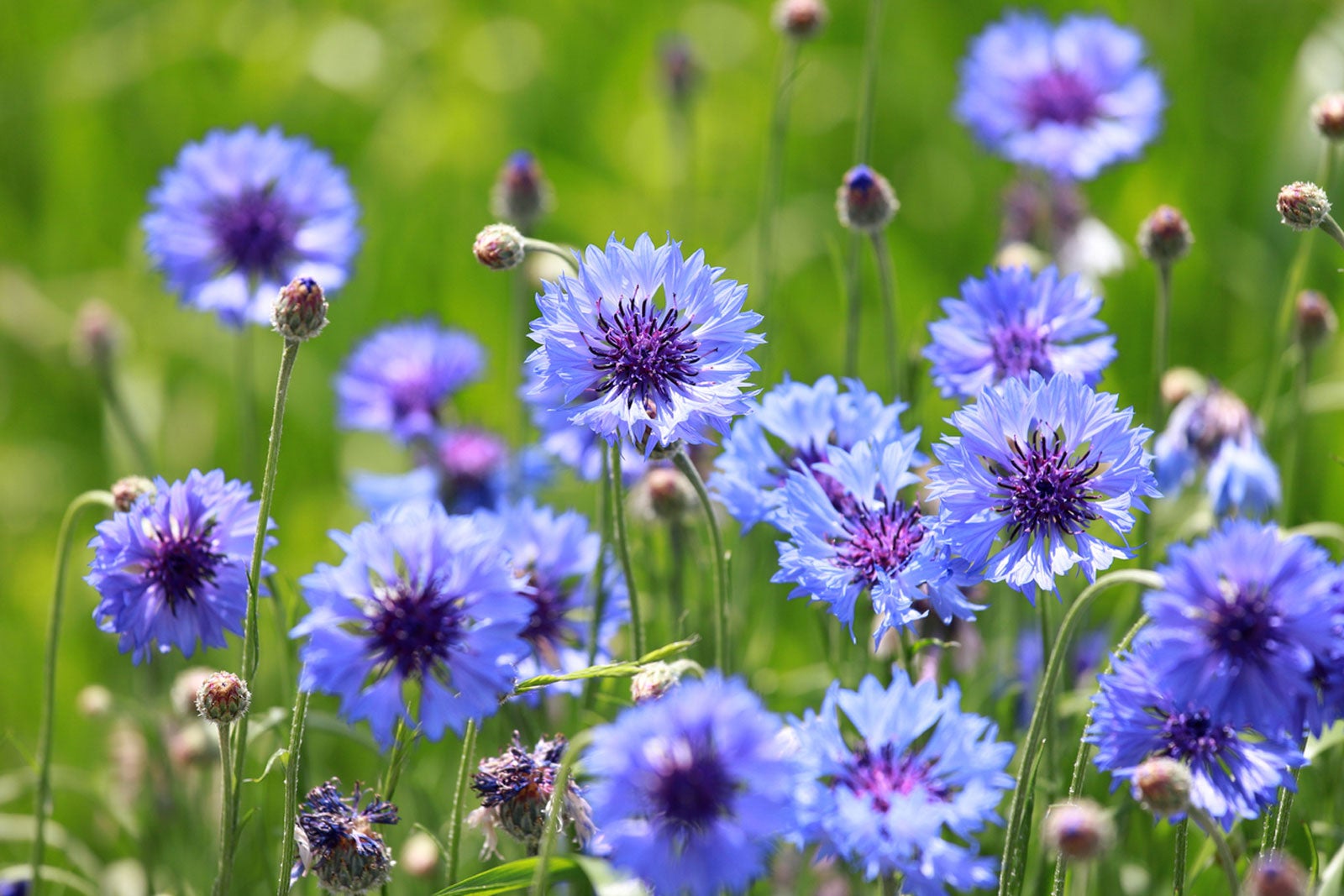Grow Bachelor Buttons: How To Care For Cornflowers
To grow brightly colored bachelor buttons, learn all about what these pretty flowers need, and how they can sometimes get carried away and become invasive.

Also known as cornflowers, bachelor buttons are as sweet as their name, and are loved both for their early-season bloom and how they attract beneficial insects.
Gardeners who grow bachelor buttons often find delight in their ease of care and hardy nature. These types of flowers do require some attention to keep them looking their best. This guide delves deeper into how to grow bachelor buttons, taking a closer look at their specific needs and unique characteristics.
Quick Bachelor Button Facts
- Botanical name: Centaurea cyanus
- Height: 12-36 inches (30-91 cm)
- Spread: 12-24 inches (30-61 cm)
- Sun exposure: Full sun, part shade
- Soil requirements: Well-draining
- Hardiness zones: Annual, USDA zones 2-11
- When to plant: Spring, fall
Caring for Bachelor Buttons
Lighting Conditions
Bachelor buttons grow best where they receive full sun, or at least 6 hours of direct light each day. Though a brief period of shade through the hottest part of the afternoon can be beneficial in warmer climates, inadequate light can diminish their flowering and cause stems to become leggy or lose vigor.
Temperature & Humidity
The term “hardy annual” is often used to refer to plants able to withstand cooler weather, including light freezes and frost. Bachelor buttons are able to withstand such a wide range of temperatures. Their growth continues throughout summer while conditions are warm, ceasing only after the production of seed and the completion of their life cycle. Bachelor buttons are also tolerant of humidity, but may succumb to fungal disease where air flow between plants is inadequate.
Watering Needs
Sign up for the Gardening Know How newsletter today and receive a free copy of our e-book "How to Grow Delicious Tomatoes".
Bachelor buttons only seldom require supplemental irrigation. In most regions, rainfall will be more than sufficient in meeting the needs of the plant. Weekly watering, however, may be beneficial in regions where there is frequent heat or prolonged periods of drought. Plants grown in containers also appreciate routine irrigation, allowing the soil to dry only slightly between waterings.
Soil & Compost
Bachelor buttons are well-suited to a wide range of soil types, provided that beds or containers drain well. Overall, soil structure and composition can be improved through the use of compost and other amendments specifically suited to the grower’s needs. Gardeners can expect the best results in beds with a neutral pH, or those that are only slightly acidic.
Fertilizing
A popular choice in wildflower and naturalized plantings, bachelor buttons are known for their ability to thrive in soils with poor fertility. In most gardens, adding finished compost or balanced fertilizer at planting time will supply plants with needed nutrients throughout the season. Continued feeding can occur on a monthly basis.
Problems, Pests & Diseases
Bachelor buttons are only seldom affected by pests or disease. Still, growers should monitor for common garden insects, like aphids or mealybugs. Sudden changes in the plants’ appearance may denote the presence of disease, most of which relates directly to growing conditions such as poor drainage or nutrient deficiencies within the soil.
When and How to Plant Bachelor Buttons
Determining when to plant bachelor buttons depends greatly upon the region. In USDA zones where winters are mild, gardeners find success with planting in the fall. After germination, these seedlings overwinter in the garden, resuming their growth in very early spring. In gardens where winter weather is more severe, growers need to wait until spring before planting.
How to grow bachelor buttons from seed varies by technique. Start seeds indoors, in late winter, or sow directly into the garden as soon as the soil can be worked. When growing bachelor buttons in containers, plant them in the same manner, making certain to sow seeds outdoors only when appropriate.
Bachelor Button Deadheading & Pruning
Deadheading bachelor buttons helps to prolong their bloom and prevents the production of seeds. This is especially important to prevent the plant from re-seeding in the garden. Removing faded blooms aids in prolonging the production of flowers, and also helps to keep beds tidy and clear of debris. Bachelor button plants do not require pruning, but can be pinched back early in the season to promote compact, bushy growth.
How to Propagate Bachelor Buttons
Bachelor buttons are most reliably propagated by seed. Gardeners can choose from a wide range of heirloom and open-pollinated varieties, both of which will grow true-to-type. Saving seed from season to season is easy to do and ensures a steady supply of beautiful blooms for years to come.
Frequently Asked Questions
How Do You Keep Bachelor Buttons Growing?
As annuals, bachelor button plants will grow, flower, and set seed within the same season. The successful production of seed will mark the end of the plant’s growth cycle. Preventing seed-set through deadheading can be helpful in increasing the longevity of plants and extending the overall production of flowers.
Do Bachelor Buttons Reseed Themselves?
Though deadheading can help to prevent the production of seed, staying-up with the task can be difficult. Mature bachelor button seed drops from plants freely, and it’s almost guaranteed to re-seed in most regions.
Are Bachelor Buttons Invasive?
Bachelor buttons can be controlled easily in most gardens. However, increasing numbers of the plants can be difficult to manage, spreading over great distances. It is for this reason that the species has been added to many invasive plant lists. Referencing laws and regulations regarding its introduction is important for the protection of one’s own garden and the local ecosystem.

Becca Badgett was a regular contributor to Gardening Know How for ten years. Co-author of the book How to Grow an EMERGENCY Garden, Becca specializes in succulent and cactus gardening.

